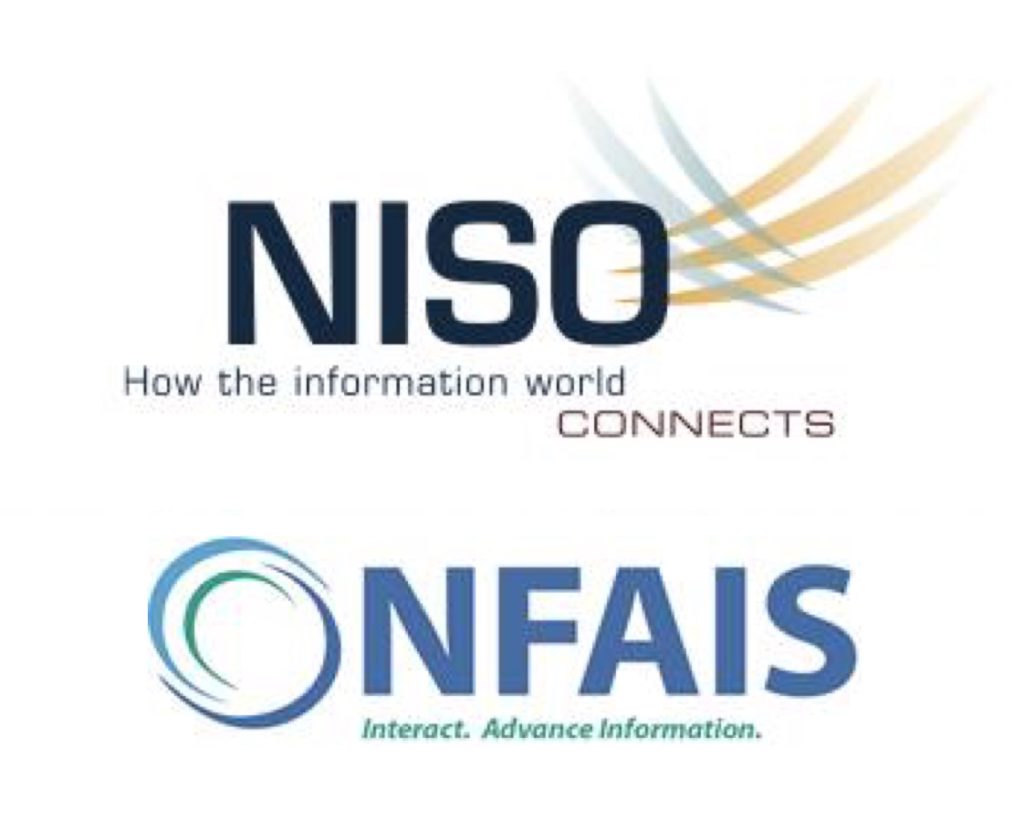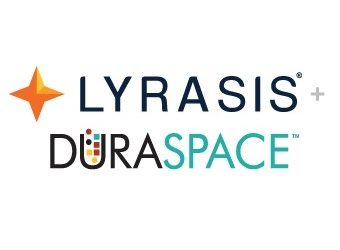Yesterday at the NFAIS Annual Conference, Deanna Marcum, president of the NFAIS Board, and I jointly announced plans that NISO (National Information Standards Organization) and NFAIS (National Federation of Advanced Information Services) will merge this summer. The merger, which is contingent on NFAIS member approval, will consolidate two organizations that have a long history of success in bringing the community together to work toward improved distribution of content to scholars and researchers. The combined association will be more effective, vital, and influential within the community of publishers, libraries and technology partners who make up the membership.

The vision of NFAIS put forward by G. Miles Conrad, one of the founders and the first president of NFAIS, was of an organization that could ensure the timely flow of information to all who need it by promoting communication and collaboration across the global information community. NISO strives toward a similar goal of facilitating information distribution through consensus technical standards, training, and education. NFAIS’ mission is focused on communication, convening, and collaboration, while NISO’s mission is focused on the details, the technology specifications, and the policy minutia of making digital information exchange function.
For eight decades, NISO has driven innovation through consensus solutions to community problems. NISO has an extensive network of working groups and committees dealing with the particulars of developing and implementing new standards and policies, but NISO has been limited in its role as a regular convening organization. Working groups organized by NISO have focused on the more specific elements of technological implementations. While these details may seem mundane at times, their implications can be tremendous and their adoption industry-changing, such as with DOI, ISSN, Dublin Core Metadata, or the Journal Article Tag Suite. NISO’s diversity, processes, and neutrality allows participants to work together to solve problems in a non-competitive environment.
Since the late 1950s, NFAIS has had a tradition of bringing together representatives from the publishing, technology, and library worlds to discuss common challenges, while learning about forthcoming products and services to meet those challenges. Through its annual conference, NFAIS identifies trends, invites innovative voices to address emerging issues, and serves as an important networking hub for different sectors. It has advanced best practices and produced various educational resources over the years, but there have not been organic mechanisms for continuing the thought leadership conversations at the close of the events NFAIS hosts.
The combination of these two activity streams creates the potential to expand those convening opportunities and enlarge the conversations, while driving forward tangible outputs from those meetings. Where there are ways to rationalize programs and reduce duplication, that will be done. More importantly, the combined entity will be positioned to help identify where new technologies or policy solutions are emerging, and then act quickly to build consensus around those solutions. Once implemented, these ideas will mean better service to readers and researchers.
The traditional boundaries between what it meant to be a publisher and software provider, or between library and publisher, or between content provider and discovery service are blurring, just as national boundaries have faded in our information landscape. This changing landscape is requiring organizations of all types to be more innovative, more collaborative, and nimbler in the face of evolving market demands and pressures. This merger will support these transitions in our community. NFAIS will add to the breadth of voices engaged in NISO standards development work, while NISO’s constituency will add to the vibrancy of the discussions taking place within NFAIS about the future of information exchange. A combined organization will be well-positioned to support its membership to address technological and policy challenges.
Last August, Scholarly Kitchen Chef Angela Cochran noted: “As many smart people have predicted, consolidation within scholarly publishing will continue to make big news well into 2019.” This announced merger is but one of many in our community just in the past six months since Cochran’s piece. Consolidation has been a driving force for growth among the top-tier corporations, not only in the scholarly landscape, but also in the trade publisher, the system supplier, and the library services communities as well, serving a wide range of goals as Cochran outlined. Nor is this a new trend. Just to highlight one example, OCLC has an entire webpage listing the 18 mergers and acquisitions it has closed since 1999. Journal titles move so frequently between publishers, there is a recommended practice on how publishers should interact with each other and their subscribers to facilitate these transfers. In the association world, there have also been mergers, which I have highlighted more than once, as has Roger Schonfeld, just last week. As our community changes, so too must the associations that support that community.
The Board of Directors of both NISO and NFAIS unanimously saw this union as an opportunity to improve the service we collectively provide. Merging will strengthen the overall scholarly community by concentrating our resources, expanding the voices engaged in our collective work, and invigorating our activities. The combined entity will continue to operate under the name NISO, retaining the brand NFAIS for specific programs, and I will lead the combined organization as Executive Director. Deanna Marcum and I will host a town hall meeting at 1:00pm on February 19th to discuss the merger, the plans on moving it forward, as well as take any questions from the membership. It will continue to be, as it has been, an interesting time to serve this community.
Discussion
11 Thoughts on "NISO and NFAIS Announce Plans to Merge"
Congratulations to you, Todd, and to NISO and NFAIS. This merger will hopefully be an accelerator to technical standards development, but more importantly, outreach in standards adoption.
Please could you explain what NISO and NFAIS stand for for the unitiated – and other acronyms too!
Sorry about that! Have updated the post with the abbreviations defined.
Thank you, David. The National Information Standards Organization (NISO) is a non-profit association accredited by the American National Standards Institute with a mission of developing technical standards and best practices for the publishing, library and software vendor communities. The National Federation of Advanced Information Services (NFAIS) is trade association that serves the global information community by fostering collaboration among government, academic, not-for-profit and commercial information and technology experts in the development of effective and efficient solutions to the accessibility, discoverability, abstracting and indexing, and retrieval of scholarly content. More information about NFAIS is at https://www.nfais.org/about. More information about NISO is available at: https://www.niso.org/what-we-do
Congratulations to the leadership atNISO and NFAIS. This is a good move and will help further the good work done in these groups.
Congratulations to Todd and the NISO and NFAIS communities. I am confident you will be stronger together!
That sounds like a great union. Wishing you much success!
Congratulations, Todd. I wish you much success with this.
Thank you everyone for your positive feedback and encouragement. This is a great opportunity for both organizations to advance understanding, as well as drive innovation and interactions among the library, publishing, government-agency, and software communities.
So say we all!
Yes!
What exciting news! This is a great move and I look forward to seeing the combined organization thrive.



